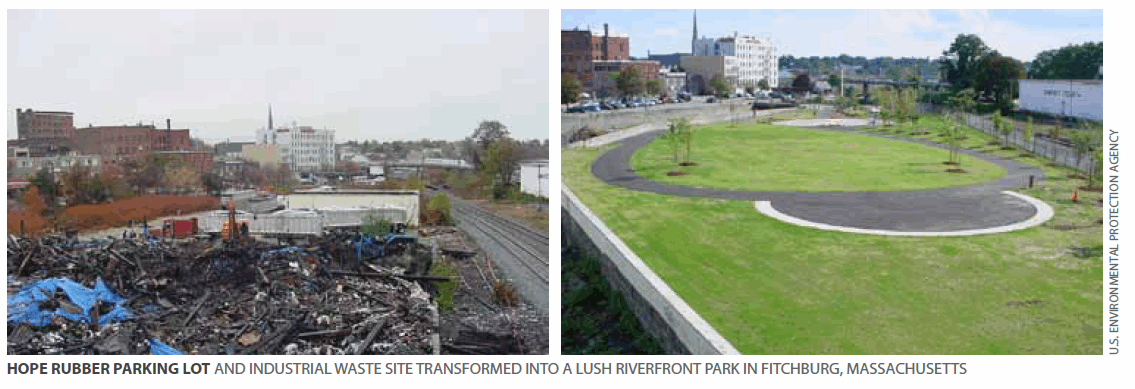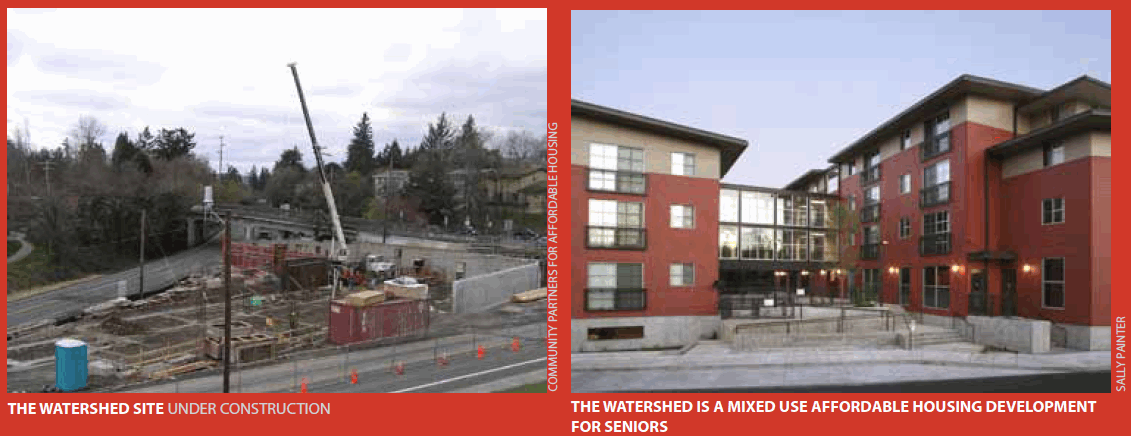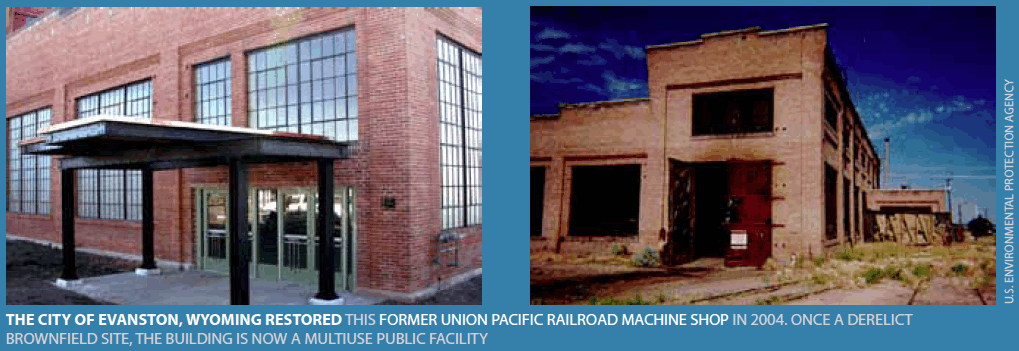AMERICAN PLANNING ASSOCIATION
OVERVIEW
Brownfields are sites that have, or are perceived to have, contamination. They range in size from a single lot to a multiacre postindustrial site. Brownfields can be found in almost every community in the U.S. Though often thought of as eyesores that plague a community and stall its progress, this guide encourages communities to think of brownfields as community assets.
Brownfields impact communities in a variety of ways. Abandoned or dilapidated buildings on brownfield sites signal neglect even in an otherwise well-maintained neighborhood. Contaminants found on brownfield sites can pollute soil, air, and water resources on- and off-site. This poses environmental and public health threats. Safety is another issue as neglected sites are a breeding ground for illegal activities, such as dumping. Finally, brownfields are a drain on the local economy and take a serious toll on community morale, especially in low-income neighborhoods that suffer from a disproportionate number of brownfield sites.
Despite these negative impacts, brownfields present an opportunity to communities. Redevelopment efforts across the country have transformed former gas stations, contaminated industrial sites, dilapidated hospitals, and run-down, asbestos-laden schools into affordable housing, parkland and open space, community centers, housing for elderly, mixed-use developments, and even community gardens and other forms of urban agriculture (see page 33 for more information on agriculture-related uses on remediated brownfields). Brownfields are often found in prime locations— central to business districts, bordering or within neighborhoods, along popular commercial corridors, and on high-traffic transportation routes, and provide opportunities for economic development in historically disinvested communities. Brownfields offer developable land in otherwise built-out communities. The redevelopment of even a single brownfield site can spur economic development and opportunities throughout an entire district.
Each and every brownfield site is different. Physical characteristics, site history, community dynamics, location, contaminants, ownership, and financing all play a role in the how a site is redeveloped. Notwithstanding, this guide presents a basic redevelopment process that can be molded to fit almost any effort to remediate and redevelop a brownfield site. Because this guide was developed for CBOs that often have limited capacity, the reader should assume that the information in this guide pertains to site-specific redevelopment.
The basic steps in the brownfield redevelopment process include:
- Step 1: Develop a Community Vision
- Step 2: Identify Brownfield Sites
- Step 3: Assess Level of Contamination
- Step 4: Determine Reuse Options
- Step 5: Evaluate Cleanup Options
- Step 6: Implement a Redevelopment Plan
Download full version (PDF): Creating Community-Based Brownfield Redevelopment Strategies
About American Planning Association
www.planning.org
“The American Planning Association provides leadership in the development of vital communities by advocating excellence in community planning, promoting education and citizen empowerment, and providing the tools and support necessary to meet the challenges of growth and change…Through its National Infrastructure Investment Task Force, the American Planning Association is working to engage members, APA components, and our allies and partners in a national conversation about how to address our infrastructure crisis and increase investment in building communities of lasting value.”









 RSS Feed
RSS Feed